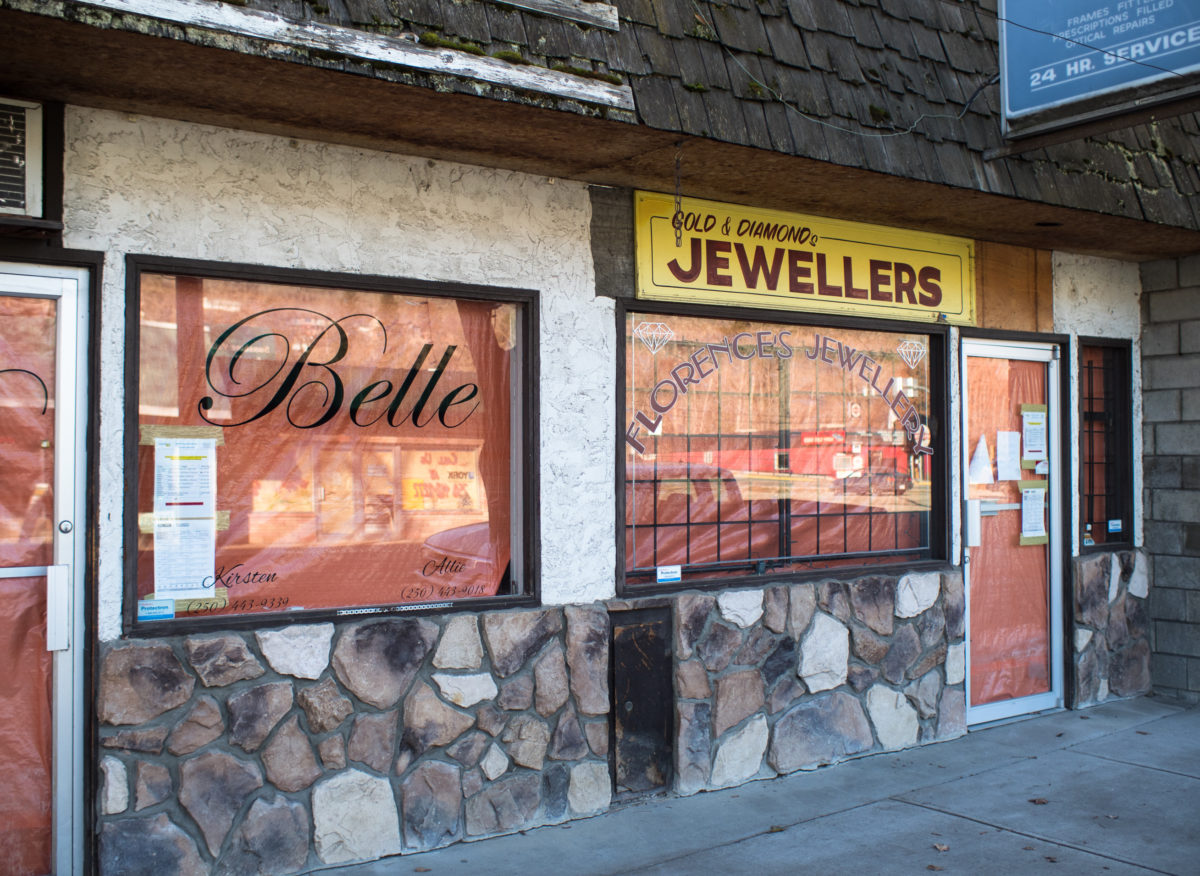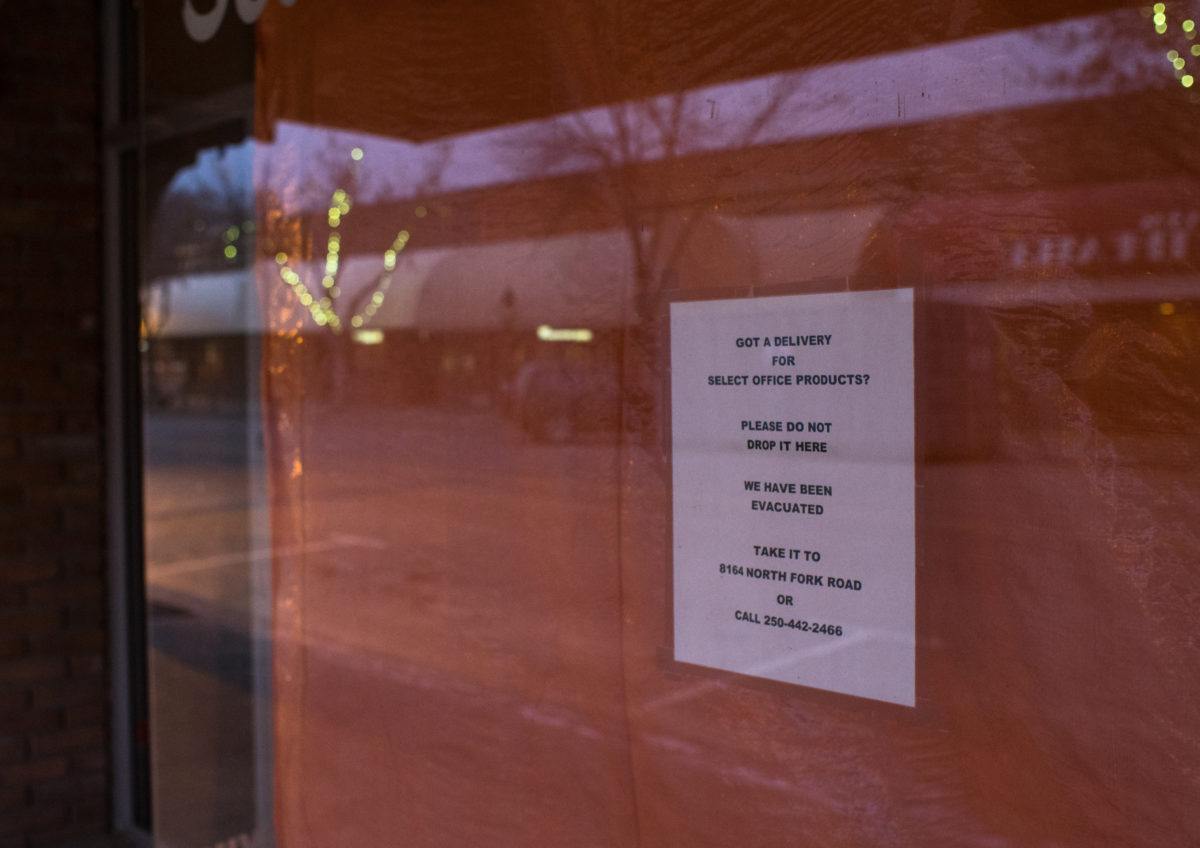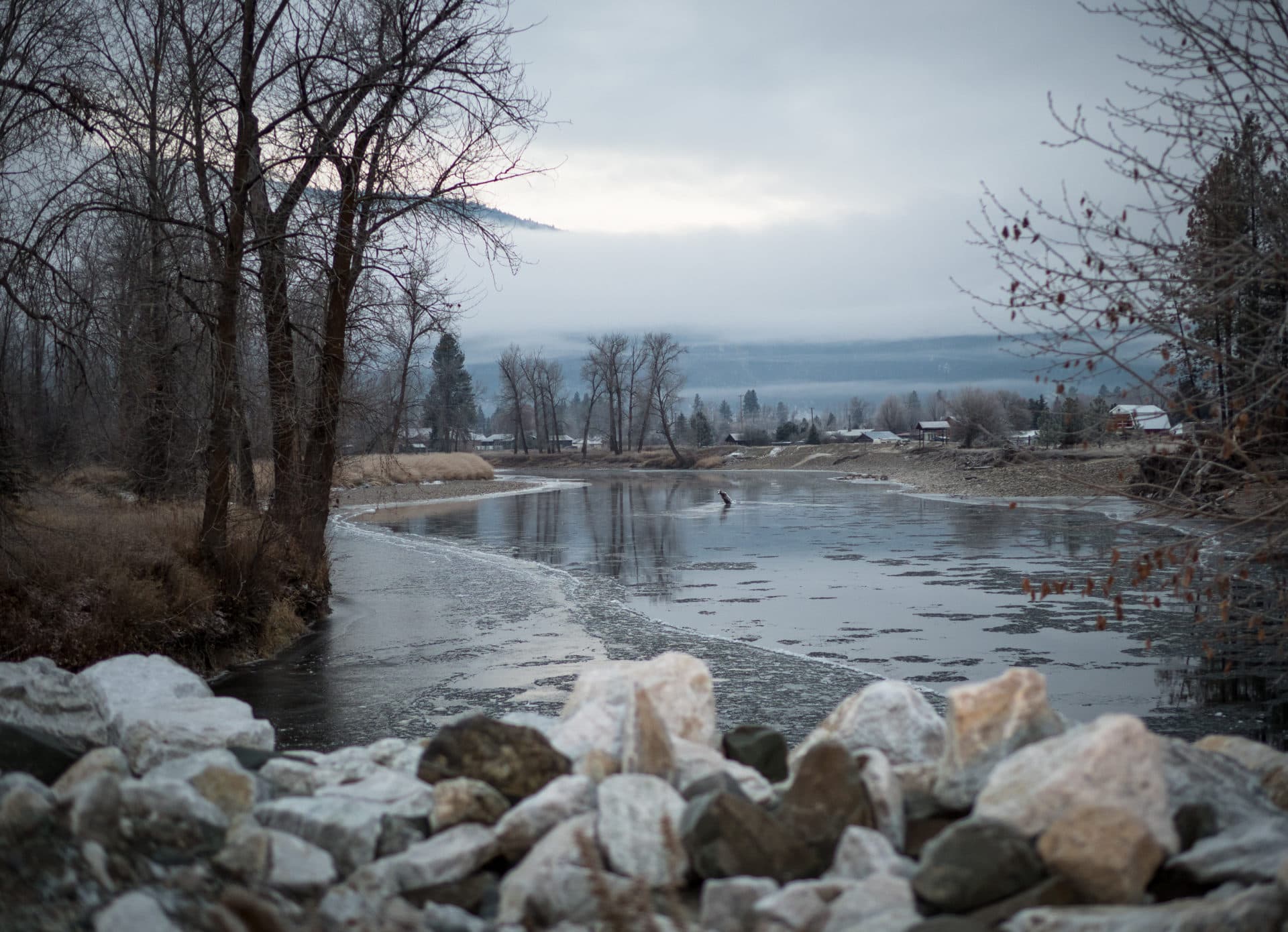
‘Afraid of the water’? Life in a city that dumps billions of litres of raw sewage into lakes and rivers
10 billion litres of sewage are dumped into Winnipeg’s lakes and rivers each year. Some...
A sliver of hope was offered Monday to beleaguered Grand Forks business owners, many of whom remain unable to re-open after floods swept through the city last spring, destroying buildings, stock and livelihoods.
Jennifer Rice, Parliamentary Secretary for Emergency Preparedness, during a visit to the city, handed over $2.9 million in provincial funding for small businesses in the Regional District of Kootenay Boundary affected by the floods. Each business will have to apply individually, through the Canadian Red Cross, for grants of about $18,500 each.
Since the Kettle and Granby Rivers burst their banks in May, the province has provided about $13 million in recovery funding, but, with the exception of grants of $1,500 going to individual businesses, the bulk has gone to homeowners.
About 100 businesses were affected by the flood and more than two dozen around the downtown area remain closed, while many other home-based or agricultural operations are also unable to reopen.
Some business owners have left the community permanently because of financial hardship and fears that the floods will happen again because underlying causes, including forestry practices and climate change, remain in play.

Dozens of businesses, like these on Main Street in Grand Forks, remain unopened six months after the flood. Photo: Louis Bockner / The Narwhal
Estimates of losses by some business owners range beyond $500,000 and others are juggling credit cards and dipping into home equity and retirement savings while waiting to re-open, so, for those people, the extra cash will make a difference, said Graham Watt, flood recovery manager at the Regional District of Kootenay Boundary.
“It can’t replace the lack of insurance or address the scale of the damage, which for many businesses is hundreds of thousands of dollars, but it will help with some of the impact,” he said.
“I think it’s one important piece of the puzzle.”
Mayor Brian Taylor agreed that the cash injection will help push some businesses back to a viable position.
But, more than that, it is a boost to morale at a time when it is badly needed, he said.
“It’s a strong message to people that they haven’t been forgotten. There’s so much that went to the housing losses and very little recognition of the damages to businesses,” Taylor said.

A whitetail deer haunts the still-abandoned streets of Grand Forks where many businesses devastated by spring floods are expected to remain permanently closed. Photo: Louis Bockner / The Narwhal

The papered windows of a shuttered business gives directions for deliveries on Main Street in Grand Forks. Photo: Louis Bockner / The Narwhal
Housing help from the province was essential, but “maybe now we’ll see a more hopeful community of people in the business sector,” he said.
“You need the employment, but, also, the vitality that is wrapped up in the small business sector. When they are depressed and feeling left out, it sets the tone for recovery. We want the recovery to be an optimistic process,” Taylor told The Narwhal.
One of the business owners looking forward to the financial help is Lorraine Davies-Van Boeyen, who has not yet been able to re-open her downtown business supply store and is trying to make ends meet by conducting sales from home.
“I really had my doubts when it seemed they were totally ignoring us,” said Davies-Van Boeyen whose losses are estimated at between $70,000 and $80,000.
“But this will certainly help. That’s for sure.”
The Red Cross has been asked to expedite the program and get the money moving, said Taylor, adding that some would have preferred the money to be handled by government and — as has taken place in some communities struck by wildfires — distributed without each business owner struggling through a full application and justification process.
“But I do realize there has to be accountability,” Taylor said.

The ice-ringed Kettle River, once a rushing torrent, now moves peacefully through Grand Forks’ South Ruckle neighbourhood. The large rocks in the foreground were being placed on the river bank days before the flooding in an effort to mitigate rising water levels. It was a lost cause, however, and the excavator that was used to place them ended up being stranded. Photo: Louis Bockner / The Narwhal
The Red Cross website says the program will launch “in the coming weeks,” so it appears that the wait is not yet over and businesses could remain in limbo into the New Year.
Delays have been one of the many frustrations as the city attempts to pick itself up after the catastrophic flooding and Rice, who was appointed by Premier John Horgan to work with Grand Forks recovery and resilience efforts, acknowledged that many residents don’t believe the system has moved fast enough.
“We have been ill-prepared for these recent events,” she said.
However, B.C. will do better in the future and the unprecedented floods and wildfires over the last two years have prompted the province to take a close look at how it manages recovery, Rice told The Narwhal.
“The Emergency Program Act has not been updated since the 1990s so part of our whole internal looking includes examining what we need to do to put forward new legislation or to improve or update the Emergency Program Act.”
Government is planning to talk to the Insurance Bureau of Canada about problems experienced in Grand Forks and will take a close look at the Disaster Financial Assistance, Rice said.

Sandbags still surround a house deemed unsafe for habitation in the neighbourhood of South Ruckle. The city hopes that with provincial and federal funding it will be able to complete a buyout of many of the condemned homes. Photo: Louis Bockner / The Narwhal
Disaster Financial Assistance is based on 80 per cent of the value of the home, but does not take into account the value of land or outbuildings. The result is that the lion’s share of compensation often goes to owners of expensive homes rather helping those struggling to get by.
“Do we have to look at that? Yes,” Rice said.
The aim is to shift to a more adaptive system with a focus on rebuilding more resilient communities, she said.
“Right now, the way legislation works and, with the design of our program, it is very much about dealing with the immediate need and getting people back on their feet or building back to pre-disaster. We are not actually legislated to do more mitigation or plan to build something that is more resilient,” Rice said.
Watt is pleased that the province has realized that B.C.’s recovery strategies and legislation need to be revamped and that lessons from Grand Forks will be used to address future problems.
“There’s no real playbook after the first few weeks of recovery,” he said.
Grand Forks resident Les Johnson said floods are different from wildfires, where rebuilding can start shortly after the fire is extinguished, and, in the face of climate change, there is an urgent need for B.C. to look at how to cope with future floods.
“Here we are six months later and we are still waiting,” he said.
“People here are just wondering what the heck can take that long. It is something we are going to face in the future as a province,” he said.
Rice would not comment on claims by some foresters and local residents that the severity of the floods was worsened by clearcutting at higher elevations in watersheds around Grand Forks and excessive construction of logging roads.
The Ministry of Forests, Lands and Natural Resource Operations has said the floods were caused by a heavy snowpack in the Boundary region, estimated at 238 per cent of the norm, followed by unusually warm weather and days of heavy rain.

The log yard and mill of forestry giant Interfor is located in the heart of Grand Forks. Many residents feel that rampant clear cutting of forests in watersheds above the Granby and Kettel rivers acted as a catalyst to already dangerous flood conditions. Interfor too suffered damages during the spring floods. Photo: Louis Bockner / The Narwhal
While there is no dispute that the unusual weather was a catalyst, some point to massive clearcuts and a 2015 Forest Practices Board ruling that government had not taken adequate action to address road density in the area.
Forestry consultant Martin Watts has conducted computer model studies showing that the amount of timber in the Boundary Timber Supply Area has been overestimated by 20 per cent, meaning the Annual Allowable Cut is too high — claims disputed by the forests ministry.
“When one combines a rate of logging that is 20 per cent above a sustainable level with excessive logging at high elevations, the result is flooding,” Watts told the Narwhal.
Although Rice steered clear of commenting on forestry issues, she said the province will be looking at external factors and not just the aftermath of flooding, because Emergency Management B.C. has recently adopted the Sendai framework.
“It looks at how we adapt for a changing world and do disaster mitigation and adaptation. It’s a totally different approach…(Now) we tend to plug a lot of holes and deal with things in silos and, by adopting the Sendai framework we are looking at the upstream, middlestream and downstream effects of the various risks we face in B.C.,” she said, emphasizing that climate change is a vital part of that equation.

Fred Marshall, a retired forester, walks through cutblock 04Q-09, a 454-hectare clearcut logged by Interfor above the Boundary Creek drainage. Marshall believes questionable logging practices are one of the main causes of the Grand Forks floods. Photo: Louis Bockner / The Narwhal
But residents of Grand Forks are already looking nervously at next spring and there are growing concerns over logging practices, Taylor said.
“No one is saying it’s the only factor creating the flooding, but it could be a contributing factor to how quickly the water came down. I think we need a closer look at that. Plus the information that’s out there that logging practices have not been sustainable,” he said.
Taylor would like to see Grand Forks control its own watershed, but the previous provincial government felt municipalities were too volatile to handle that responsibility he said.
“It was also felt that we would be too subject to being influenced by environmentalists who would convince us to reduce the cut and we wouldn’t be able to make our allocations of revenue. That was clearly an indication of the previous government’s attitude to us and our watershed. We are hoping we will get a different response from the NDP government,” he said.
Get the inside scoop on The Narwhal’s environment and climate reporting by signing up for our free newsletter. On a warm September evening nearly 15...
Continue reading
10 billion litres of sewage are dumped into Winnipeg’s lakes and rivers each year. Some...

Court sides with Xatśūll First Nation, temporarily halting Mount Polley mine waste expansion

Break out the champagne: Emma’s storied life and leadership in journalism has earned her the...
